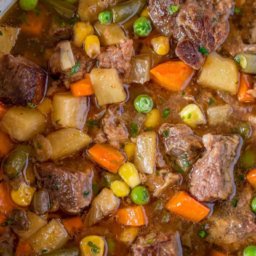It is a common misconception that wild seafood is good and farm-raised is bad.
I wish the answer was that simple.
Choosing between wild-caught and farm-raised fish depends on what kind of fish you’re buying, as well as where and how it is fished (or farmed).
So, whats the difference between farmed raised and wild caught fish?
Simply put, wild-caught seafood is caught from a natural habitat (lake, ocean, river) whereas farmed seafood is raised in large tanks.
The nutritional differences between wild and farmed fish are not as great as you might think. Farmed and wild-caught rainbow trout, for example, are almost identical in terms of calories, protein, and most nutrients. There are some minor differences: wild-caught trout have more calcium and iron. Farmed-raised trout have more vitamin A and selenium. But for the most part, they are nutritionally equivalent.
One of the main reasons we eat fish, is that they are a potent source of omega-3 fatty acids, which are known to lower the risk of heart disease. Farmed fish often have the advantage. Today’s farmed salmon provide more omega-3 fats than wild-caught salmon, presumably due to the farms’ fortified feed.
Keep in mind the color of the flesh is not a reliable guide to omega-3 content. Atlantic salmon (whether fished or farmed) is a pale orange, while Sockeye is dark red.
Are Farm-Raised Fish Higher in Contaminants?
In 2004, a widely-cited study found the levels of PCBs (polychlorinated biphenyls), a potentially carcinogenic chemical, to be eight times higher in farmed fish than in wild-caught fish. That sounds pretty scary, but the amount of PCBs in the farmed fish was still less than 2% of the amount that would be considered dangerous. Subsequent studies found PCB levels in farmed fish to be similar to those of wild fish.
In addition, the Journal of the American Medical Association, found that the health benefits of eating the omega-3-rich fish outweighs the potential dangers of PCBs.
The other contaminant that most people worry about with fish is mercury. The fish that present the biggest concern (swordfish, king mackerel, tilefish, shark, and tuna) are all wild-caught. The most common farm-raised fish (catfish, tilapia, and salmon) all have low mercury levels.
What about “color added,” antibiotics, and hormones?
U.S. regulations prohibit the use of hormones or antibiotics to promote growth in farmed fish. This is not necessarily the case in other countries. High antibiotic use in imported, farm raised fish is common. Many international fish farms are not held to high inspection standards that you would see in the United States.
You can check where your fish is from by looking for the Country of Origin Labeling (COOL), which is required on all seafood sold in the United States. Frozen seafood will have two labels: one to specify where the product was packaged and one that indicates where the seafood was caught or farmed. This can be deceptive, as seafood can be packaged in the Unites States (so it appears to be a U.S. product), but is actually a product of a different country.
“Color added” on a label for salmon means that the salmon were given a feed which contains a pigment called astaxanthin. When the feed is digested, the astaxanthin is absorbed into the fish’s flesh giving the reddish or ‘salmon’ color. Astaxanthin is pigment occurring in nature that gives flamingos their pink coloration. In the wild, salmon get astaxanthin through their diets, which consist of plankton and small fish.
In addition, there’s currently no genetically modified fish for sale in the U.S. At least, not as food, but you can buy genetically modified fish for your tropical fish tank that glow in the dark, thanks to some genes borrowed from iridescent coral.
Bottom line: Don’t stop eating fish just because it is farm-raised or wild-caught. Eating some fish (no matter where it’s from) is healthier than eating no fish.
Do you’re research and eat what works best for you based on affordability and availability. As for me, I often buy farmed raised fish.
The best resource I know for keeping it all straight – is the Seafood Watch program https://www.seafoodwatch.org at the Monterey Bay Aquarium. You can search their website by type of fish, learn what the issues are and get recommendations for best choices and better alternatives. They do an amazing job of keeping up with constantly-evolving industry practices and environmental issues all over the world.






Thanks for the info! Ive been waiting for that one 🙂
You’re welcome girl….It only took me over a year! ha! Sorry about that girl!